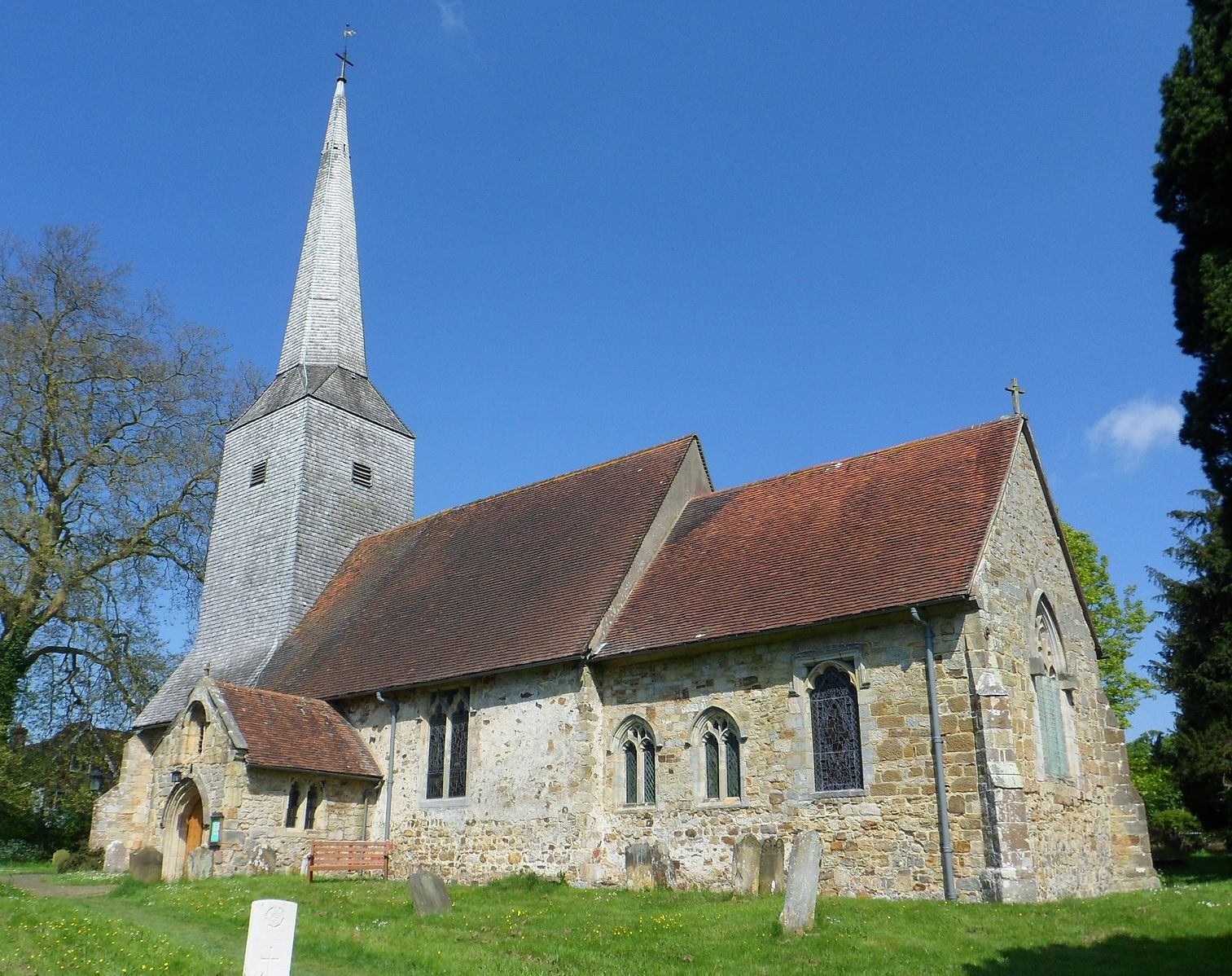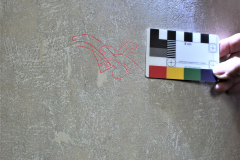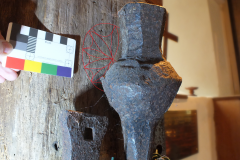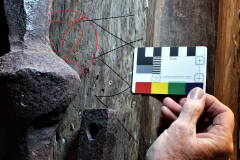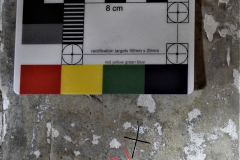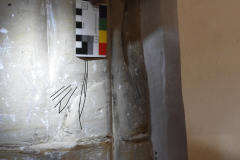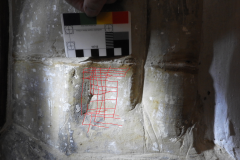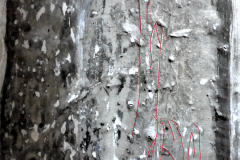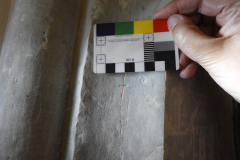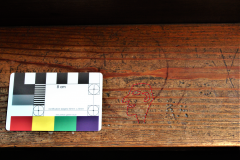St Mary Magdalene, Cowden, Kent
The church of St Mary Magdalene Cowden is a border church, only just within the area covered by the Kent Medieval Graffiti Survey, lying as it does with its southern edge almost touching the Sussex border and is three kilometres at the most from Surrey to the West. Cowden, although extended by some modern housing, is still a small village, with its small ancient church. This is constructed of course stone, having a timber bell turret with a tall, shingled spire, originally no doubt constructed to provide for the spiritual comfort of the medieval farming community, as it does for today’s villagers.
It’s interesting to wonder how it might it have appeared had the Victorians not decided to “improve” it, by adding a north aisle. Although the pillars of this aisle do contain some graffiti, given what has been found elsewhere here, the original plaster of the old north wall may have contained more.
Of what was found, the only graffito that can be described as good is a compass drawn daisy wheel incised into the timber of one of the bell turret supports. This is largely obscured by three old bell clappers, displayed where they can best hide it. Although, as the descendent of generations of blacksmiths, the author can appreciate these latter, they do hide the graffito and make recording it extremely difficult.
Areas of the rest of the church, mainly the South doorway, show evidence of graffiti that has been eroded by the weather, damaged by vandals, probably posing as restorers. Most of this consists of numbers of lightly incised lines, which look deliberate but from which no real shape can be seen. There are also, what appear to be, the remains of memorials or perhaps the “Kilroy woz ‘ere” type of graffiti, from the 17th century and later.
Much, if not most, of this graffiti is around the outside of the original south doorway, to which a porch was added in the late 15th or early 16th century. There are signs that areas of stone around this doorway have been rubbed down and some filler applied.
A number of hollowed out sections of stonework, believed to be where weapons or tools were sharpened [see below for further discussion], may indicate that the doorway could have been constructed in the 13th century.
Finally, there is modern graffiti on the organ panelling and on some of the pews. The former, due to heavy coats of varnish was very difficult to photograph, so only a few of the better images have been included here. Whilst with the pews, as most of the graffiti is really little more than scribble, only the best examples of this was recorded and shown here.
The photographs used to illustrate this brief work are roughly grouped as they have been described above. In many respects the graffiti of this church is typical of what has been found in many others in Kent, with much being badly weathered, damaged and either wholly or partly removed. This is especially true of the scarring believed to have been left by the sharpening of implements, whether weapons of war or tools. In 2019, the KMGS has found these in many of the 28 churches surveyed. It may be, that as the church was likely to have been the only stone building in a medieval village, it would commonly have been used for putting an edge on iron or steel. Certainly, the author can remember a similar scar on the stone step of the kitchen door of the house where he grew up. This was left by his mother, and several generations of others sharpening kitchen knives on it. [For a further discussion of ‘sharpening’ marks, see Medieval Mythbusting Blog #10: Arrow Stones by James Wright of Triskele Heritage.]
A further theory, that can also hold water, is that the stone was rubbed down to produce dust. This was then added to medicines and ointments, the idea, to the medieval mind, being that as the church was holy, it was after all consecrated, then the fabric of the building would also be holy. If holy was good, than material obtained from the church fabric could only be beneficial.
The numbers of these marks being found suggest that this is an area worthy of further study.
Report by Alan Anstee
St Mary Magdalene
Edenbridge
TN8 7JE
Search Terms: memorials, initials, bell turret, daisy wheel (compass drawn), zig-zag, mason’s mark, cross, mesh, sharpening marks, scraping marks, organ graffiti, 1940s, human figure

